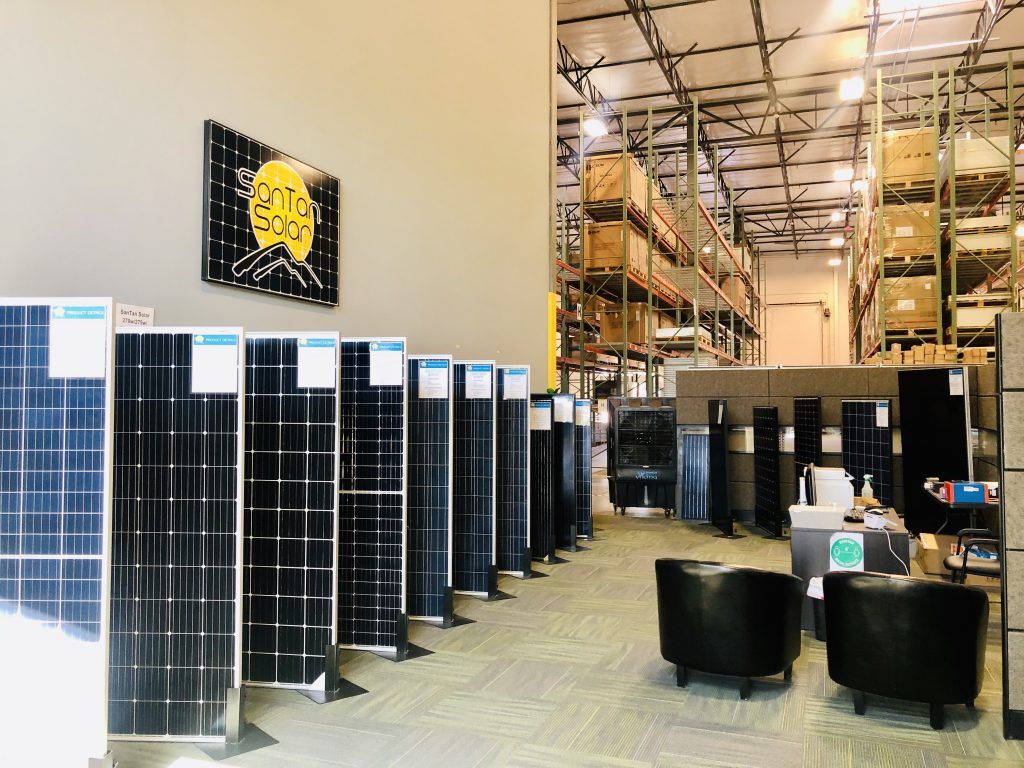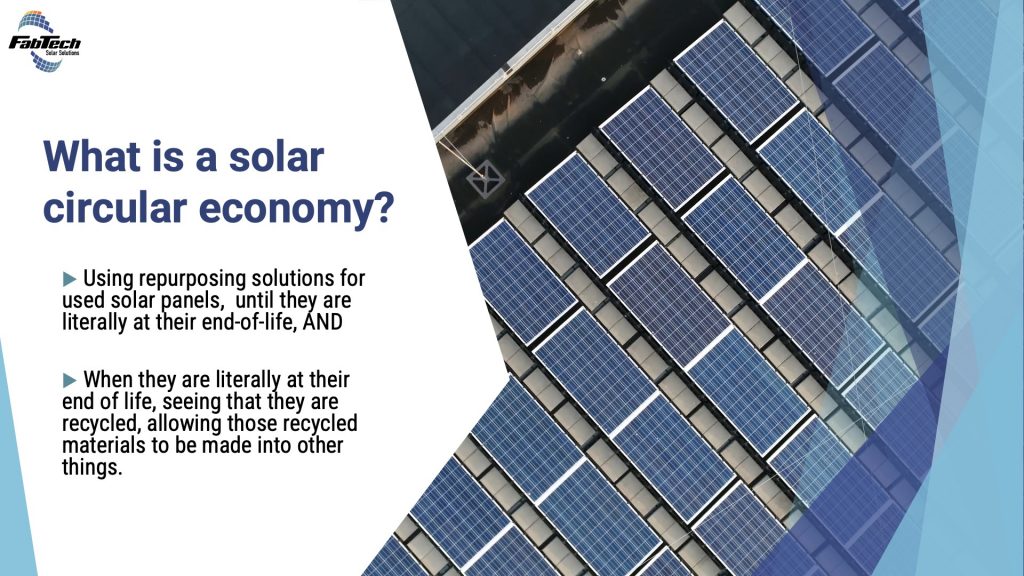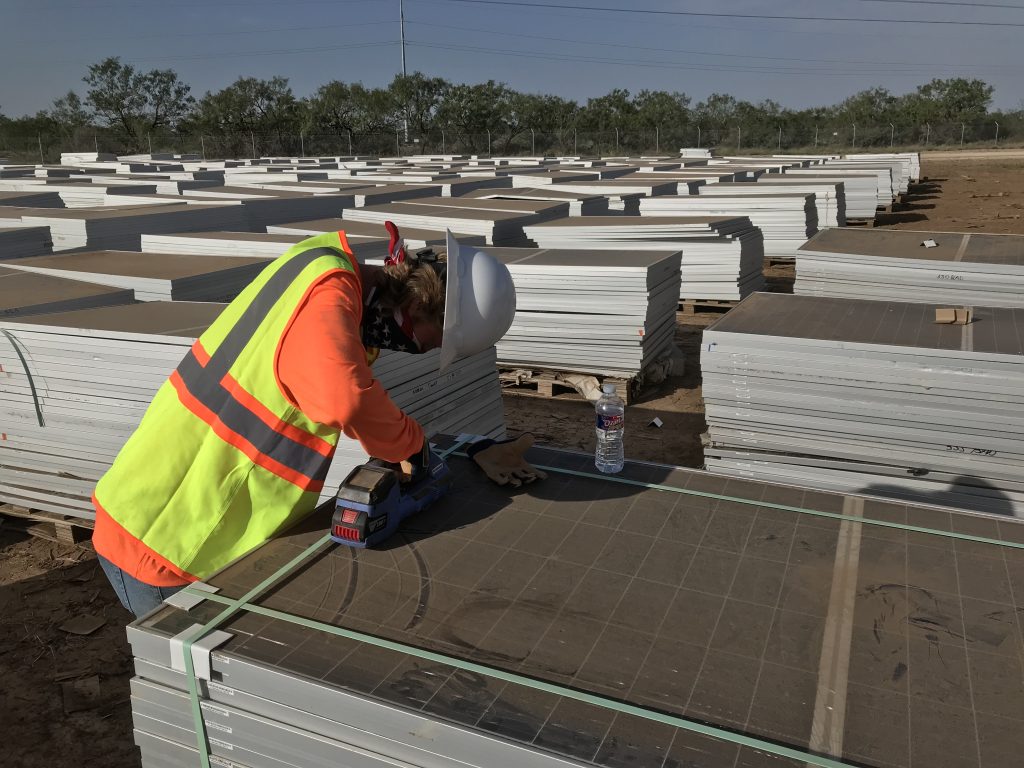By David Dodge, GreenEnergyFutures.ca
A record number, more than 126 gigawatts or about 300 million solar modules were installed around the world in 2020.
Fully 82 per cent of the new net capacity for electricity generation installed in 2020 was renewable led by solar with wind power and hydropower close on solar’s heals.
As hundreds of millions of solar modules are added to the grid each year the question of solar recycling is becoming more and more important every day.
Fabtech is an electronics recycling firm based in Phoenix, Arizona that pivoted to solar recycling five years ago when they started seeing a market for recycling solar modules emerge.
“Modules are guaranteed by manufacturer’s warranty for 20 to 30 years,” says Janette Freeman, head of business development for Fabtech.
“Solar panels just keep on ticking. They don’t have a lot of moving parts, not a lot of things that are going to naturally break on them,” Freeman says, adding they regularly see modules working well beyond 30 years.
But solar is growing fast. “We [the U.S.] will add as much as 500 to 600 gigawatts more by 2030,” says Freeman. Today the U.S. has 100 gigawatts of solar so this represents explosive growth.
“Fabtech got started in refurbishing solar just a very few years ago. I think we had two employees at the time, and maybe 10,000 square foot warehouse,” says Freeman.
“Today we have 75 employees and we have over 200,000 square feet of warehousing” at operations in Arizona and Georgia.

Reuse – the best of the 3 Rs
“Very quickly we discovered that this is the new market to get into and began to find new ways to work with the solar panels and refurbish them. And that there is a market for used solar panels as well,” says Freeman.
When a job comes up Freeman says the Fabtech folks assess the used modules to get an idea of how many can be reused and how many will have to be recycled.
“So we sort –– so broken glass panels go to recycling. If it’s another obvious defect like complete burning or lifting of a laminate or burning into the cells we can look and go, ‘no, that’s gotta be recycled’ then that goes to recycle.”
Then they do a deeper sort on the modules that can be reused. Simple repairs are done to modules that need it and then they all go through Fabtech’s “specially invented carwash for solar panels” where they are shined up and then tested.
“We don’t even resell them unless it’s at 80 per cent capacity.” Then the modules are placed into inventory for sale.

Repowering – A new source of used modules
The price of solar has dropped dramatically in recent years and at the same time performance is going up. Utility companies are crunching the numbers and when the economics are right they swap out old solar modules for new ones before their end of life. This is called repowering.
“We’re seeing a lot more of that. Where they had a 200-watt module on there and now they can put on a 400-watt module,” says Freeman.
“So those types of modules don’t need too much refurbishing or repairing but can be turned around and used by someone else.”
All in all, Freeman says about half the solar modules they take in can be refurbished and reused and about half require recycling.

A second life for 600,000 solar modules
In four years Fabtech has refurbished more than 600,000 solar modules and sold them into a burgeoning used solar module market.
Now there are folks who are installing solar who couldn’t afford it in the past.
“It’s kind of exciting that someone can spend, let’s say $5,000” and put solar modules on their home, says Freeman.
And it also seems news of Fabtech’s used solar modules has rippled through the alternative, off-grid, camping, and vandweller communities because this is where they’ve found solid demand for this low-cost alternative.
Fabtech has heard from many folks in the vandweller world. Rubber Tramp Rendezvous is a massive gathering once a year in Quartzsite, Arizona organized by vandweller Bob Wells who has 527,000 subscribers to his YouTube channel CheapRVliving.
Fabtech often gets visits from them at their warehouse and showroom in Phoenix, Arizona.
What about recycling?
Fabtech’s focus is on folks decommissioning or repowering solar farms, the larger the better. In this wheelhouse, the proceeds from sales of refurbished modules pay for the recycling of the broken ones.
But when it comes to homeowners or micro solar installations companies like Fabtech obviously can’t afford to be driving around picking up a few dozen solar modules. What’s needed says Freeman are drop-off points, you know like they have for batteries at hardware stores.
Fabtech’s focus is on refurbishing and reselling solar modules. For the modules that are no good, they work with solar recyclers such as Cascade Eco Minerals in Portland Oregon that is focusing on the recycling side.
Closing the loop on solar recycling will probably mean legislation to make manufacturers responsible for recycling spent modules.
The Washington Photovoltaic (PV) Module Stewardship and Takeback Program came as a result of legislation passed in 2017 and is just now being implemented. This is called Extended Producer Responsibility in the recycling industry and it’s probably the best way to ensure modules are reused or recycled.
According to Chris Stearn of Cascade Eco Minerals Solar modules are made up of 75% glass, 15% aluminum, 5% wire, 3% solar cell, and about 2% back sheet and encapsulant.
In other words, the vast majority of the materials are very common.
There are also “very small” amounts of lead, copper, indium, gallium, and selenium, cadmium, germanium, and tellurium depending on whether the modules are thin-film or regular crystalline modules. Disposal of one solar module might not be a problem, but when you are talking about millions of modules recycling is essential.
Our story about Fabtech and their success in refurbishing and reusing solar modules covers off the “reuse” “R”. Next week we talk to Chris Stearn of Cascade Eco Minerals, one of only four firms in the U.S. doing end of life “recycling” of solar modules.

